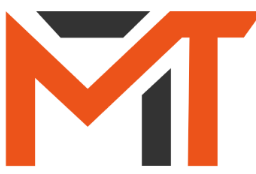As per the requirement of manufacturing process with interacting as non-conventional method, we makerspace technologies have designed this revit course. New users can become proficient with revit course as efficient as possible to learn core-modelling skills with included topics.

As per the requirement of manufacturing process with interacting as non-conventional method, we makerspace technologies have designed this revit course. New users can become proficient with revit course as efficient as possible to learn core-modelling skills with included topics.
Introduction To Autodesk Revit
Basic Revit Tools And Features
Advanced Revit Tools And Features
Collaboration And Documentation In Revit
Presenting Your Revit Model
Revit Project Workflow
Topics Included In Revit Structure
and code checking.
Structural Modeling: The software enables users to create and modify structural elements such as beams, columns,
walls, foundations, and slabs.
Documentation: Revit Structure has tools for creating detailed construction documentation, including drawings, schedules,
and quantity takeoffs.
Collaboration: Revit Structure allows users to collaborate with other team members, including architects and engineers,
to share project information and coordinate designs.
Visualization: The software includes visualization tools that enable users to create 3D views of the structure and perform
walkthroughs to visualize the design in real-time.
Rebar detailing: The software provides rebar detailing tools that allow users to create reinforcement bars for structural
elements such as columns, beams, and foundations.
Clash Detection: Revit Structure includes a clash detection feature that helps to identify and resolve potential clashes
between different elements of the structure.
Code Compliance: Revit Structure includes features that help users ensure that their designs comply with building codes
and regulations.
Building Information Management: The software enables users to manage all building information, including structural
design, project data, and documentation, in a single platform.
Topics Included In Revit Architecture
doors, windows, roofs, and other building elements.
and plumbing.
tools for coordinating and managing the different aspects of a project.
animations to showcase their designs.
as well as schedules and material takeoffs.
Topics Included In Revit Mep
consists of various tools and commands that help in designing and modeling building systems.
electrical, and plumbing systems.
Users can create ductwork, air terminals, and other components of HVAC systems.
and communication systems.
and includes tools for coordinating and managing the different aspects of a project.
and animations to showcase their designs.
Documentation: Revit Architecture includes tools for creating construction documents, such as floor plans, sections, and elevations,
as well as schedules and material takeoffs.
Our mission is to:
We envisioned that:
We are an educational and Training Institute that is been certified by An ISO 9001:2015 Certification. Makerspace Technologies provides a variety of courses that will uplift your skills and train you to deal with day-to-day problems that occur in a particular field. It was founded in 2020 to provide the best-specialized courses and to become a globally renowned institution.
Markerspace Technologies are located in Indore M.P India. We provide total business, engineering courses and training to enhance your skills and knowledge. We serve a large number of courses that administer customers across the country with multiple channels and have been efficient in providing services.
© 2025 coursetakers.com All Rights Reserved. Terms and Conditions of use | Privacy Policy